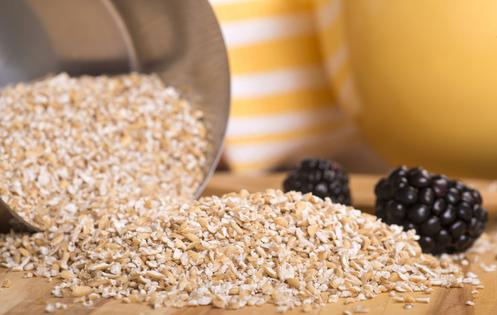Environmental Nutrition: Intact whole grains vs. whole flour
Whole grains are essential for good health. That you know. But in what form should you eat these grains? Does it make a difference if you consume them in their intact, whole kernel form, as with wheat berries, for example, or as a ground whole grain flour, such as whole wheat flour? The answer is both simple and complex.
Intact grains
All intact grains are whole grains, but not all whole grains are intact grains. For example, a bread or flour labeled "100% whole grain," is indeed a whole grain food that counts toward your daily recommendation of three or more servings of whole grains a day, but it is not an "intact" grain. Intact grains are, as the name suggests, left intact; only the indigestible outer hull is removed. Teff -- about the size of a poppy seed -- is an exception because the grain is too small to remove the hull. Barley, steel-cut oats, brown rice, quinoa, cracked wheat, wheat berries, rye berries, amaranth, sorghum and millet are considered intact grains.
Whole grain flours
A whole grain that is processed into a whole grain flour has not had any of the nutrients in the grain removed. All of the beneficial parts (bran, germ, and endosperm, and phytonutrients, such as phytates and phenolic acids) are retained in the whole grain flour. However, the grain is milled into powder, altering the texture of the grain. The whole grain flour may be used in breads, muffins and pancakes, making them a source of whole grains. While foods made of whole grain flour have been processed, that does not mean they are composed of refined grains, like white flour.
The difference
Intact grains generally have fewer calories by weight than processed whole grains, simply because the unprocessed grain is bulkier. In addition, studies show that intact grains are less likely to raise blood sugar levels, due to slower absorption in the intestinal tract. The coarser the grain, the lower the glycemic index, in a stepwise progression: intact grains->whole grains->coarse flour->and fine flour. Studies also suggest that intact grains may help reduce appetite more than processed whole grains. Intact grains also may be helpful for constipation, because they cause food to move faster in the bowel. However, some research suggests that when manufacturers process an intact grain into a flour it may be beneficial by releasing some phytonutrients that would otherwise be unabsorbed in the intestinal tract.
Despite research showing differences in the effects of intact vs. processed whole grains, the most important message is to aim for at least three servings a day of whole grains, including intact grains, whole grain cereals and whole grain breads.
(Environmental Nutrition is the award-winning independent newsletter written by nutrition experts dedicated to providing readers up-to-date, accurate information about health and nutrition in clear, concise English. For more information, visit www.environmentalnutrition.com.)







